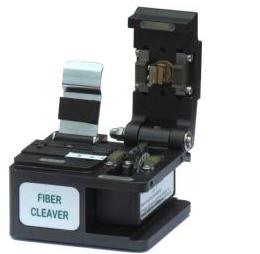-

- Sopto Home
-

- Special Topic
-

- Fiber Optics knowledge
-

- How to splice better?
Fiber Optics knowledge
- Maintained Methods of Fusion Splicer Parts
- How to Use the Fiber Optic Cleaver?
- What are Fixed Attenuators & Variable Attenuators?
- Deployable Fiber Optic Systems for Harsh Mining Environments
- Developing Miniature Fiber Optic Cable Has Become the Trend
- Fiber Optic Cleaning Procedures
- 6 Steps to Selecting a Fiber Optic Cable
- Signal Attenuation Introduction
- How Fiber Transmission Works?
SOPTO Special Topic
Certificate



Guarantee
Except products belongs to Bargain Shop section, all products are warranted by SOPTO only to purchasers for resale or for use in business or original equipment manufacturer, against defects in workmanship or materials under normal use (consumables, normal tear and wear excluded) for one year after date of purchase from SOPTO, unless otherwise stated...
Return Policies
Defective products will be accepted for exchange, at our discretion, within 14 days from receipt. Buyer might be requested to return the defective products to SOPTO for verification or authorized service location, as SOPTO designated, shipping costs prepaid. .....
Applications
Fiber Optis can be used in so many fields:
Data Storage Equipment
Interconnects,Networking
Gigabit Ethernet
FTTx, HDTV,CATV
Aerospace & Avionics
Data Transfer Tests
Network Equipment
Broadcast Automotive
Electronics,Sensing
Oil & Gas, Imaging
Outside Plant,Central Office
Harsh Environment
Data Transmission
Illumination,Institutions
Ship to Shore,Education
Simulation,Military,Space
Unmanned Aerial Vehicles
Semiconductor Equipment
Diagnostics & Troubleshooting
Premise Networks Carrier Networks
Independent Telecommunication Providers
SOPTO Products
- Fiber Optic Transceiver Module
- High Speed Cable
- Fiber Optical Cable
- Fiber Optical Patch Cords
- Splitter CWDM DWDM
- PON Solution
- FTTH Box ODF Closure
- PCI-E Network Card
- Network Cables
- Fiber Optical Adapter
- Fiber Optical Attenuator
- Fiber Media Converter
- PDH Multiplexers
- Protocol Converter
- Digital Video Multiplexer
- Fiber Optical Tools
- Compatible
Performance Feature
Fiber Optics knowledge
Recommended


How to splice better?
1. Thoroughly and frequently clean your splicing tools. When working with fiber, keep in mind that particles not visible to the naked eye could cause tremendous problems when working with fiber optics. "Excessive" cleaning of your fiber and tools will save you time and money down the road.
2. Properly maintain and operate your cleaver. The cleaver is your most valuable tool in fiber splicing. Within mechanical splicing you need the proper angle to insure proper end faces or too much light escaping into the air gaps between the two fibers will occur. The index matching gel will eliminate most of the light escape but cannot overcome a low quality cleave. You should expect to spend around $200 to $1,000 for a good quality cleaver suitable for mechanical splicing.

Sopto High Precision Fiber Cleaver
For Fusion splicing, you need an even more precise cleaver to achieve the exceptional low loss (0.05 dB and less). If you have a poor cleave the fiber ends might not melt together properly causing light loss and high reflection problems. Expect to pay $1,000 to $4,000 for a good cleaver to handle the precision required for fusion splicing. Maintaining your cleaver by following manufacturer instructions for cleaning as well as using the tool properly will provide you with a long lasting piece of equipment and ensuring the job is done right the first time.
3. Fusion parameters must be adjusted minimally and methodically (fusion splicing only). If you start changing the fusion parameters on the splicer as soon as there is a hint of a problem you might lose your desired setting. Dirty equipment should be your first check and continue with the parameters. Fusion time and fusion current are the two key factors for splicing. Different variables of these two factors can produce the same splice results.
High time and low current result in the same outcome as high current and low time. Make sure to change one variable at a time and keep checking until you have found the right fusion parameters for your fiber type.
For more high quality and low cost fiber optics, please contact SOPTO.
Related Knowledge:
Optical Fiber Horizontal cabling Guideline
Four basic steps to completing a proper fusion splicing and Mechanical Splicing





